The Last Man Standing: How A Perth Startup Became The Mining Industry’s Tyre Whisperer
- By Sharad Matade
- August 13, 2025
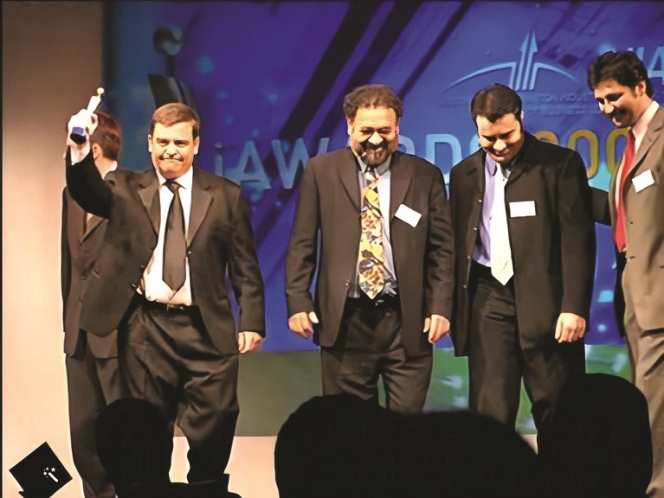
Vehicle Management Corporation survived industry consolidation to dominate a USD 1.5 billion niche managing mining’s most expensive consumables.
More than 30 years after its modest beginnings, Fernie’s Vehicle Management Corporation (VMC) now leads the global independent tyre management software sector. The company oversees USD 1.5 billion in tyre and rim assets across 480 mining sites on multiple continents. With individual mining tyres costing upward of USD 50,000, VMC’s enTIRE software has become critical for operators aiming to maximise the value of their most expensive consumables.
“We don’t sell tyres or offer tyre services – software is our sole focus,” Fernie said. This specialisation has been VMC’s core competitive strength and a key reason it outlasted larger, better-funded competitors during two decades of industry consolidation.
VMC’s journey from a single-client DOS application to managing billions of dollars in assets demonstrates how even small software firms can thrive by addressing highly specialised industry needs that larger solutions often overlook.
THE CONSOLIDATION SURVIVOR
VMC’s fierce independence stands out in a tyre industry where consolidation is accelerating. While giants like Bridgestone and Michelin snapped up rivals – Otraco and Klinge, respectively – VMC has held the line, rebuffing takeover interest and prioritising customer relationships over shareholder pressure or supplier alliances.
“With Bridgestone acquiring Otraco and Michelin purchasing Klinge, VMC became the only independent, commercially viable tyre management software provider remaining,” Fernie explained. “Developing a competitive independent system today would require USD 5+ million in funding and years of field testing, making our market position difficult to replicate and any alternatives difficult to justify.”
This independence is now central to VMC’s appeal for multinational miners working with multiple suppliers. Unlike manufacturer-backed software, VMC’s enTIRE system is completely agnostic, allowing clients to base their purchasing decisions solely on performance data and cost-effectiveness.
That strategy has earned VMC unusually durable client ties. Its three-decade partnership with Freeport Indonesia – one of the world’s largest mining operations –underscores the appeal of a model that favours operational flexibility over vendor lock-in, a growing concern among customers wary of manufacturer-driven ecosystems.
“Most of our clients are long-term,” Fernie noted, emphasising how this stability has become increasingly valuable as mining companies seek to avoid the disruption and data loss that often accompanies vendor changes in manufacturer-controlled systems.
BEYOND COST CUTTING: SAFETY AND ENVIRONMENTAL IMPACT
While cost reductions – often 10 percent to 30 percent within three years – drive initial adoption, VMC’s impact extends far beyond savings. In nonstop mining environments, where tyre failures can lead to life-threatening accidents, safety and uptime are equally vital.
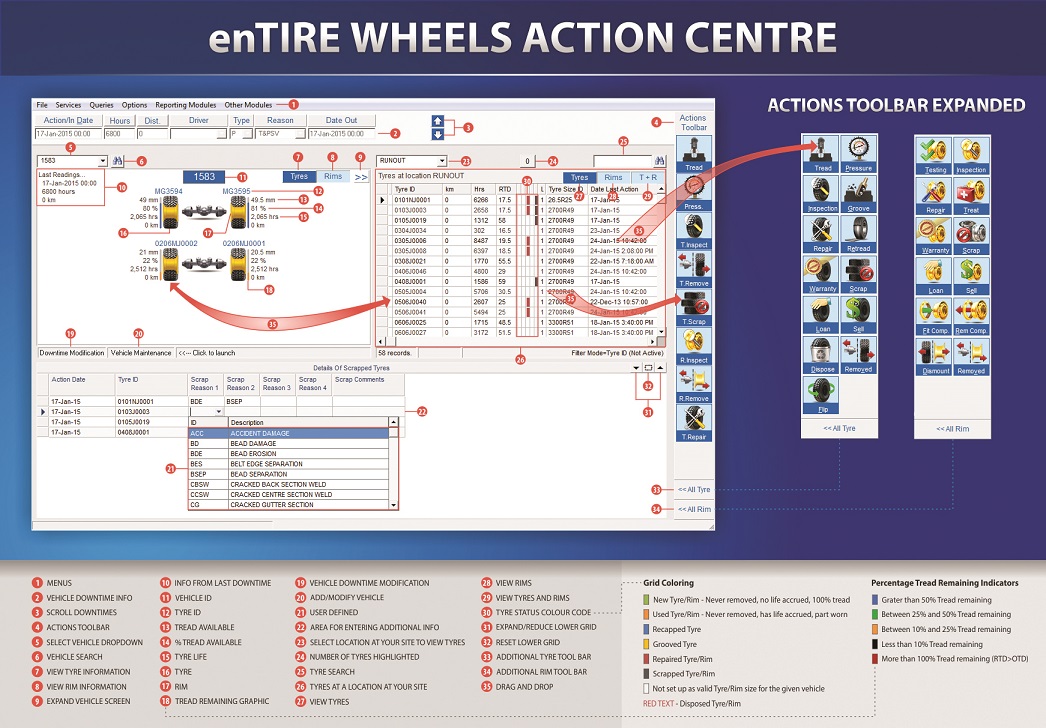
“Operating tyres outside pressure or load specs increases blowout risks,” Fernie said, emphasising safety. enTIRE tracks rim certifications and keeps failure histories, supporting safety protocols. “Rim accidents are very dangerous, potentially fatal.”
Environmental benefits have also emerged as an increasingly important value proposition for mining companies under growing pressure to reduce their carbon footprints and waste generation. By extending tyre life and dramatically reducing premature failures, mining operations generate substantially less waste while simultaneously improving fuel efficiency through optimised tyre pressure monitoring systems.
“Optimising pressure with TPMS can extend tyre life by 20–30 percent, reduce rolling resistance and lower fuel consumption by up to three percent – a substantial saving in mining operations,” Fernie explained. In an industry where fuel costs represent significant operational expenses and environmental regulations continue to tighten, these seemingly modest percentage improvements compound into substantial savings and meaningful reductions in environmental impact.
The environmental mathematics are compelling: operators can achieve approximately 30 percent increases in tyre life through proper lifecycle management, directly reducing landfill waste, shipping requirements and manufacturing demands – collectively helping reduce the carbon footprint of tyre procurement and disposal across the mining sector.
THE TECHNOLOGY EVOLUTION
VMC’s technological evolution, from humble beginnings as a basic DOS program to advanced, cloud-based solutions, reflects the broader digitisation revolution in factory operations that began in the early 1990s. The firm’s flagship enTIRE software began as a Windows product with what Fernie recounts with clear pride as a ‘pioneering drag-and-drop interface’ in the early 1990s – a cutting-edge user experience design that was decades ahead of its time.
The platform has progressed steadily through several generations of technology, transitioning from Microsoft Access databases to high-performance SQL Server implementations, which have significantly improved performance and scalability. It introduced full multi-site support features in 2001 and incrementally incorporated tyre pressure monitoring systems (TPMS) from seven sensor vendors starting in 2007. The software industry award was presented in 2005, when the system was named the Financial Review Australian Information Industry Association’s ‘Best Industrial Software Application’.
Recent development efforts focus heavily on artificial intelligence integration for enhanced analytics capabilities and predictive maintenance functionalities. “We’re actively using AI to streamline development and support,” Fernie said, outlining the company’s forward-looking technology strategy. “We expect AI will significantly enhance predictive analytics, client dashboards and user interfaces, improving how data is interpreted and acted upon.”
The integration of multiple TPMS systems represents a particular competitive advantage. “enTIRE PressureNet is sensor brand-agnostic and integrates with multiple sensor types, unlike many manufacturer-locked systems,” Fernie explained. “Our independence allows clients to choose or switch sensor brands without losing backend compatibility.”
FIGHTING FRAUD IN HIGH-STAKES OPERATIONS
In addition to optimising operations and pre-emptive maintenance, enTIRE is an advanced fraud detection and prevention solution in settings where a single tyre costs more than high-end cars. The software’s detailed tracking identifies many forms of theft, tampering and misbehaviour that afflict the high-end tyre market throughout global mining operations.
“Tyre fitters may scrap a near-new tyre (if not tracked) and then this tyre would be picked up from the scrap location and resold,” Fernie explained, detailing one common fraud scheme. “In mining, each tyre can be worth up to USD 50,000. This potential additional income is very significant in developing countries.” The financial incentives for such fraud are substantial, making comprehensive tracking systems essential for asset protection.
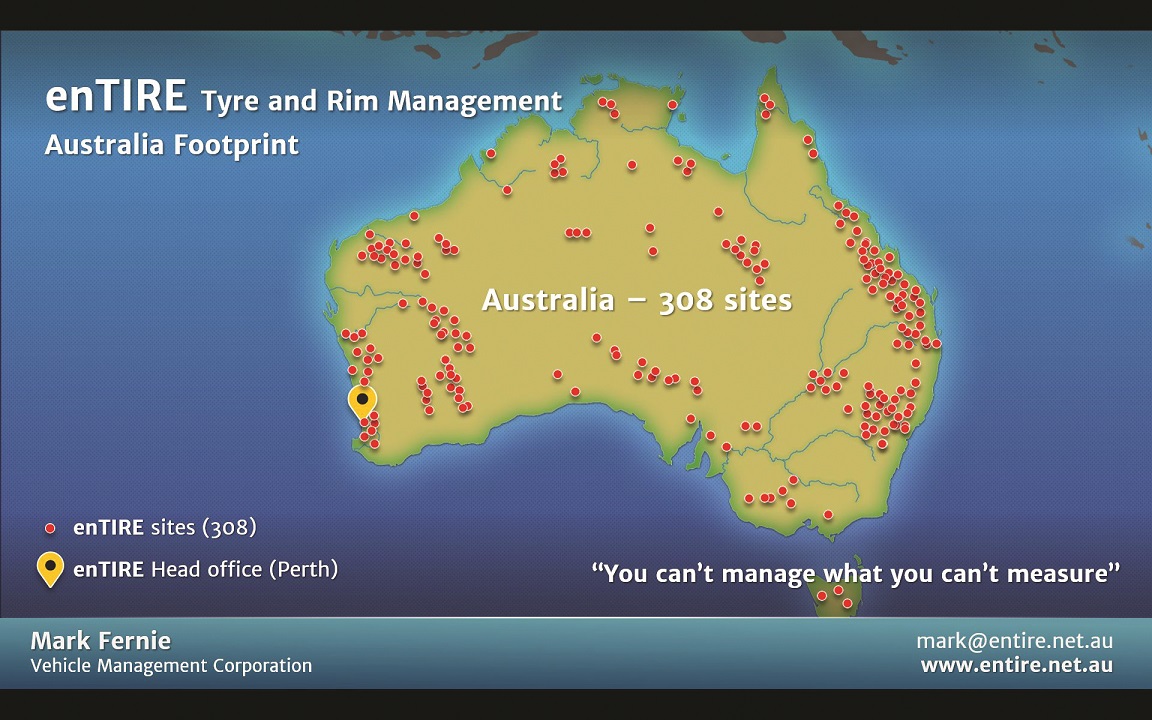
Beyond simple theft, the system prevents more sophisticated data manipulation during high-stakes contract negotiations. “If a tyre supply contract is worth USD 100 million, there can be significant pressure placed on operators of any tyre management system to ‘modify’ tyre performance in a supplier’s favour,” Fernie said, highlighting the system’s role in maintaining data integrity. “enTIRE has very strong internal systems to prevent internal tampering.”
Other fraud prevention features involve detecting unauthorised tyre replacement in off-site fleet operations, where drivers may sell new tyres and substitute them with less expensive ones, and preventing early scrapping of tyres that can otherwise be retreaded or reallocated for a longer service life.
ORGANIC GROWTH STRATEGY AND MARKET POSITION
VMC has achieved its market-leading position without relying on venture capital investment or large corporate sponsorship; instead, it has relied on diligent organic growth fuelled by strong customer relationships, word-of-mouth referrals and relentless reinvestment in product development. The firm purposefully reinvested earnings in automation technologies and enhanced software capabilities, rather than engaging in fervent hiring or costly promotional campaigns, while maintaining lean operations and establishing increasingly refined development capabilities.
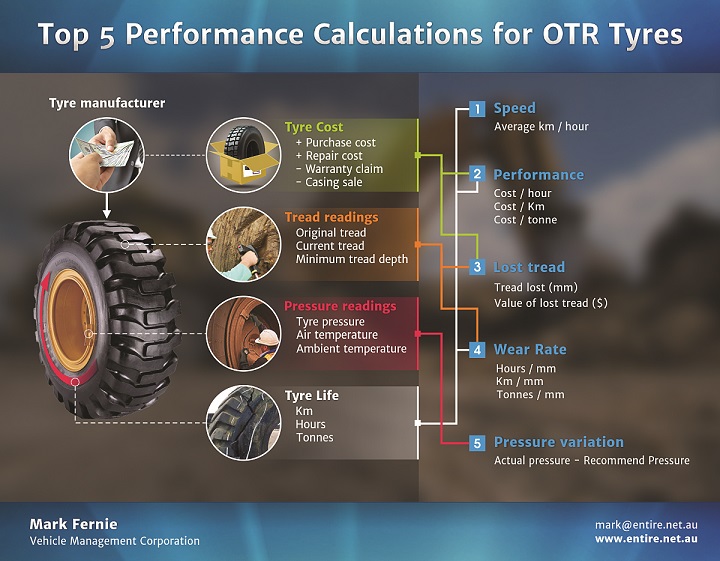
“When large manufacturers’ systems failed with over-engineered projects, clients often came to us for reliable replacements,” Fernie said, describing a pattern that has accelerated during recent supply chain disruptions when tyre shortages made lifecycle extension critical for maintaining operational continuity.
The company’s fundamental growth strategy centres on systematic data accumulation and market share expansion. “Our strategy, early on, has always been to increase market share as we realised that the more tyre performance data our systems controlled, the more valuable we would become,” Fernie explained, articulating a network effect strategy that becomes more powerful with scale.
This field-tested software, combined with deep industry connections and vast databases, now creates major entry barriers that would require competitors years and millions to overcome.
DIVERSE APPLICATIONS AND INDUSTRY DIFFERENCES
VMC software supports significantly disparate operating models in mining and transport industries, each with dissimilar tracking demands and cost-justification criteria. Mining applications typically involve high-cost, low-volume tyres that are closely monitored by operating hours. In contrast, transport fleets manage high-volume, lower-cost tyres, which are tracked by kilometres and frequently shared across interchanging trailers pulled by various prime movers.
“Mining justifies the cost of extensive data entry based on the large cost savings, while the transport industry is more careful regarding tracking cost,” Fernie explained, highlighting how economic incentives drive different implementation approaches across industries.
Its flexibility in covering these differing operational needs while ensuring consistent data quality and analytical functionality across both industries is possible with the software.
GLOBAL EXPANSION AND CULTURAL ADAPTATION
VMC continues to expand its global presence, with a specific emphasis on high-growth regions such as Africa, Indonesia, India, Eastern Europe and Latin America, where a large demand for advanced asset management solutions arises from growing mining activities and infrastructure projects.
The firm has local teams offering multilingual support capabilities. However, cultural adjustment remains a continuing challenge in emerging markets as they transition from legacy manual systems to online platforms.
“We adapt training and user interfaces to local literacy and workflow styles,” Fernie said. “Regional teams help bridge gaps in communication, training and change management, ensuring smoother adoption.”
Main entry barriers in emerging markets include the absence of sound local technical support, the scarcity of internet infrastructure in geographically remote mining sites, the reluctance to change due to entrenched manual systems and administrative hurdles involving payment reliability and bureaucratic delays.
FUTURE TECHNOLOGY AND INDUSTRY TRENDS
Future software updates mirror industry-wide trends towards greater automation and the integration of artificial intelligence. On the horizon are planned improvements, including richer analytical dashboards, enhanced cloud analytics capabilities, mobile inspection tools with integrated image capture capabilities and AI-driven notification systems for predictive maintenance notifications.
As autonomous and electric cars increasingly penetrate mining fleets, VMC’s strategic emphasis on tyre and rim information, rather than vehicle powertrains, places the company well-positioned to meet emerging transportation technologies without necessitating drastic system architecture adjustments.
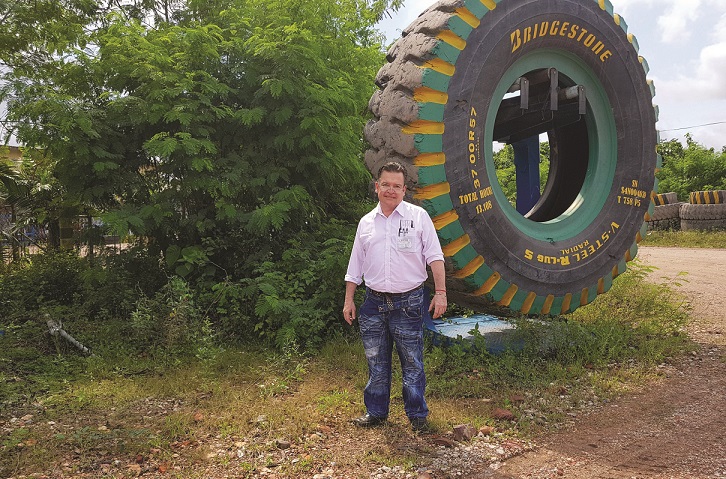
“enTIRE tracks data independently of vehicle type, so electric vehicles are managed the same as diesel fleets,” Fernie explained. “Our focus is on tyre and rim data accuracy – not the powertrain.”
INDUSTRY CHALLENGES AND MARKET OUTLOOK
The tyre management industry faces ongoing challenges related to data accuracy and actionable insights. “The industry’s main challenge is accurate and actionable data,” Fernie observed. “Successful tyre management operations start with accurate data collection, management and transparent reporting.”
Supply chain disruptions have strengthened demand for VMC’s services as tyre shortages heighten the importance of lifecycle extension and predictive maintenance. “Our strongest growth has been when there have been tyre shortages and clients want to extend their current tyre life as much as possible,” Fernie noted.
For Fernie, who brings over 30 years of experience in tyre management software development to the industry, VMC’s continued success validates the strategic decision to remain independent in an increasingly consolidated market. “Just ‘being there’ and remaining independent will always attract customers from non-independent tyre management systems over time,” he said, expressing confidence in the company’s long-term competitive position.
In an industry where margins of operation are crucial and safety must not be compromised, VMC has established a highly profitable niche by addressing complex problems that most individuals never even consider – until a USD 50,000 tyre blows on a distant mining operation thousands of miles from the nearest replacement. For mining operators globally with billions of dollars in mobile equipment, that specialised expertise and uncompromising independence have been worth their weight in gold.
Fornnax Inaugurates 12-Acre Global Hub For Recycling Innovation
- By TT News
- November 27, 2025
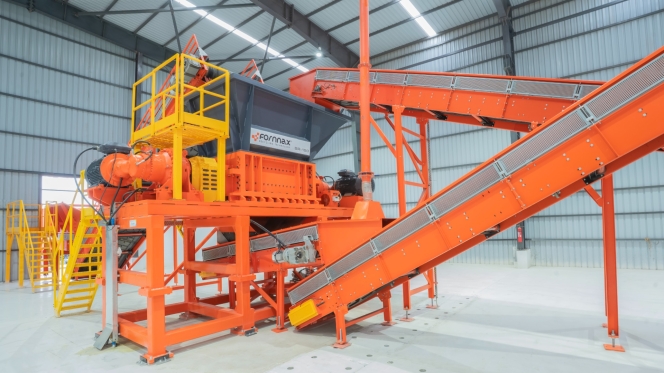
Fornnax has officially launched one of the world's largest integrated hubs for recycling innovation: a New Product Development centre and demo plant spanning over 12 acres. This facility is a critical milestone in the company's strategic vision to become a global leader in recycling solutions by 2030. It is designed to accelerate the advancement of recycling technology through a comprehensive, customer-focused approach.
The centre’s core function is its New Product Development framework, which is built upon a meticulous Gate Review Process. This system ensures precision from conception to completion. The journey begins with market research and ideation from the Sales and Marketing team, followed by a strategic review by the Leadership Team. The Design Team then creates detailed plans that are evaluated by Manufacturing, Service and Safety teams. After final approval, a functional prototype is built and subjected to a rigorous six to eight-month validation phase. The process concludes with design optimisation for mass production, officially launching the equipment for the global market. This method not just upgrades Fornnax's shredders and granulators – enhancing their capacity, energy efficiency and operational availability to 18–20 hours per day – but also validates the equipment for up to 3,000–15,000 hours under real-world conditions

A key feature of the facility is its open-door policy for clients. Customers can bring their specific materials to the demo plant to test equipment performance across various machines and conditions, providing a risk-free environment for informed investment decisions. The centre will also drive research into emerging recycling applications, such as E-waste, cables and lithium-ion batteries, where specialised engineering teams will conduct feasibility studies to design tailored solutions.
Beyond technology, the facility includes an OEM training centre dedicated to developing a skilled workforce. The programme trains operators and maintenance engineers, who gain hands-on experience before being deployed to support Fornnax's customer base. The company will also deliver comprehensive corporate training to domestic and international clients, empowering them with the expertise for optimal plant operation and maintenance. By uniting R&D, testing and training under one roof, Fornnax is establishing a powerful foundation to scale its offerings and lead the next generation of recycling technology.
Jignesh Kundariya, Director and CEO, Fornnax, said, "Innovation in product development is the key to success of becoming a global leader. With this new facility, we now have the speed, flexibility and controlled environment to design, test and validate new technologies in just six to eight months, something that would take significantly 4–5 years at a customer site. Each machine will undergo validation according to global standards, with every critical part and assembly rigorously tested under Engineering Build (EB) and Manufacturing Build (MB) protocols. Our goal is to empower customers with clarity and confidence before they invest. This facility allows them to test their own materials under real-world conditions, compare machines and see results firsthand. It’s not just about selling equipment; it’s about building trust through transparency and delivering solutions that truly work for their unique needs.”
Smithers to Expand Rolling-Resistance Testing Capabilities in China
- By TT News
- November 21, 2025
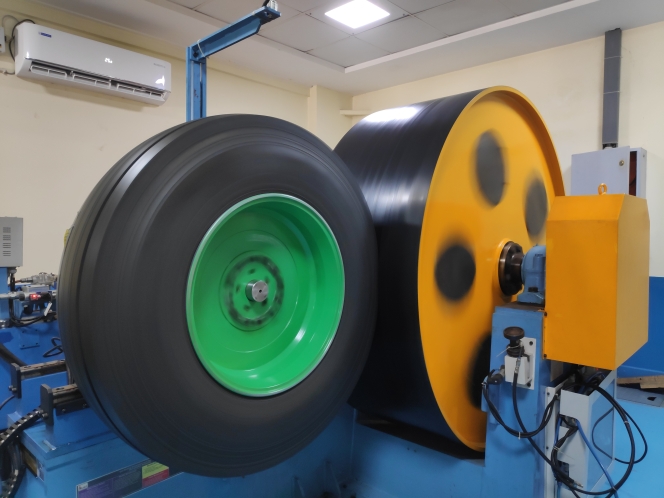
Smithers, the US-based testing and consulting group, is expanding its tyre testing operations in China with three new capabilities designed to better replicate real-world driving conditions. The investment will enhance the company’s rolling-resistance testing at its Suzhou tyre and wheel centre, strengthening its offering to global carmakers and tyre manufacturers.
The new features focus on factors that can influence vehicle energy loss, range, and overall efficiency—a growing concern as regulators tighten standards and EV makers push for longer driving range.
One new capability will allow rolling-resistance testing to be carried out with variations in slip and camber angles for passenger car and light truck tyres. Standard tests are performed at zero degrees, but even small changes in wheel alignment or body movement during real driving can affect energy consumption. The enhanced system lets customers study these effects and refine tyre designs accordingly.
Smithers is also adding high- and low-temperature rolling-resistance testing for truck and bus tyres, an extension of the temperature-controlled testing it introduced for passenger tyres in 2022. The company said demand has risen as manufacturers look to understand how cold weather affects range—a key issue for electric commercial vehicles.
A third new service will allow tyres to be tested together with chassis components such as half-shafts and brake discs. This gives OEMs independent data on how these parts contribute to overall resistance, helping them to identify where energy is being lost and to fine-tune vehicle efficiency.
All three capabilities are expected to be online by 1 December 2025.
“Smithers is seeing increased demand on a global scale for testing of tires and vehicles that more closely mimics real-world conditions,” said Derek Read, Vice President of Asia Pacific / Global Development, Materials Science and Engineering, Smithers. “These new capabilities are strategic investments into the refined, scenario-based testing our clients require to improve both tire and tire-chassis-vehicle system performance.”
Autonomous Robots Transform Continental Retreading Operations
- By TT News
- November 19, 2025
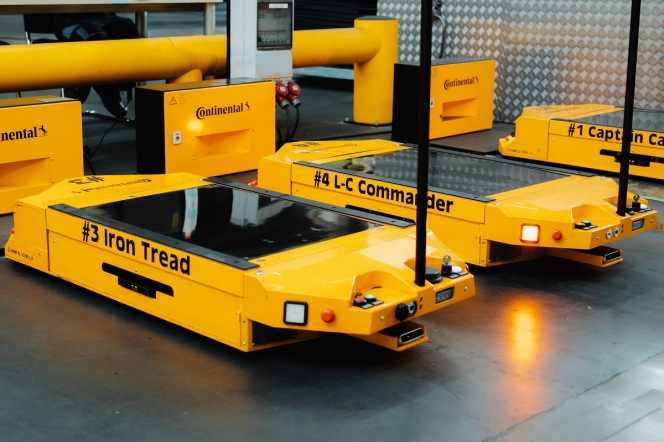
Continental's Hannover-Stöcken plant is pioneering a new era in sustainable manufacturing by seamlessly integrating advanced robotics into its core operations. Since their deployment in March 2025, a team of seven autonomous mobile robots (AMRs) has become the central nervous system for material transport, fundamentally reshaping the workflow for retreading truck and bus tyres.
This shift to automation has profoundly changed the human role on the production floor. Employees, once tasked with the physically strenuous job of manually moving heavy tyres using cranes and trolleys, are now focused on more cognitively demanding responsibilities. Their expertise is directed towards machine setup, process oversight and meticulous quality control, making their work more ergonomic and skilled.
The AMRs operate with sophisticated independence, navigating the production hall using a fusion of sensors, 360-degree cameras and AI-driven software. They efficiently ferry ‘green’ tyres between critical stages: from the building machine, where fresh rubber is applied, to the curing presses for vulcanisation and finally towards inspection. This automated coordination is digitally linked to the plant's order system, allowing for dynamic routing to optimise workflow and manage capacity.
This initiative is a cornerstone of Continental's global strategy to modernize tyre production through digitalisation and smart automation. The success in Hannover has already inspired the rollout of similar robotic solutions across the company's international network, from North America to Asia. The move aligns perfectly with the plant's sustainable mission, which is the ContiLifeCycle process itself. This process breathes new life into used tyre casings by carefully inspecting them, applying new tread rubber and vulcanising them to create a product that performs like new. The environmental benefit is substantial, as up to 70 percent of the original tyre's material is reused, significantly conserving resources.
The human element was crucial to the project's success. Continental ensured widespread employee acceptance through comprehensive training and even involved the workforce in christening the robots with creative names. This thoughtful approach has cemented the AMRs not as mere machines but as valued teammates in a shared mission to make tyre production more efficient, sustainable and future-ready.
Felix Hantelmann, head of the ContiLifeCycle plant, said, “Self-driving robots have been supporting our production workflow for six months now. They handle simple, repetitive transport tasks such as moving a tyre from one point to another. The robots are directly connected to our digital order system, so they know exactly where to go and how to coordinate with each other to get there. They are a valuable addition to our daily operations and help create a safe, efficient and ergonomically optimised production environment.”
Continental Deploys Vacuum Tech For Real-Time Tyre Wear Particle Analysis
- By TT News
- November 18, 2025
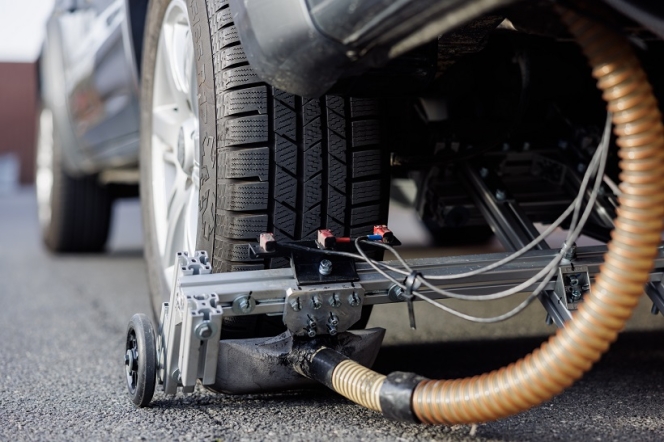
Continental's leadership in reducing tyre wear is fundamentally driven by its pioneering research into how particles are generated. A pivotal element of this strategy is the recently concluded OLRAP project, a collaboration with the Technical University of Braunschweig that broke new ground in real-world particle analysis. The research team engineered a complex experimental vehicle, outfitting it with a custom vacuum system and sensitive particle sensors. This innovative setup enabled the real-time collection and analysis of airborne particles directly at their source – the rolling tyre – under actual driving conditions. The resulting data, which for the first time correlates specific driving dynamics like aggressive acceleration and hard cornering with particle emissions, provides an unprecedented understanding of wear patterns.
This deep, data-driven insight is what directly fuels Continental's product development. By knowing precisely how and when wear occurs, engineers can make targeted optimisations to tread patterns and rubber compounds. The objective is to systematically design tyres that shed less material, thereby directly reducing their environmental footprint from abrasion. This development process rigorously maintains the critical safety and performance standards that drivers demand.
The tangible success of this research-to-development pipeline is confirmed by independent analysis, which shows Continental tyres abrade 11 percent less material than the competitor average. Furthermore, this proactive research and development strategically prepares the company for upcoming regulations like the Euro 7 standard, which will impose limits on tyre wear emissions. Beyond its own laboratories, Continental extends this commitment through cross-industry efforts, co-chairing the Tire Industry Project and contributing to public initiatives aimed at capturing tyre particles from road runoff. Through this integrated approach, Continental is leveraging fundamental scientific discovery to create more sustainable mobility solutions.


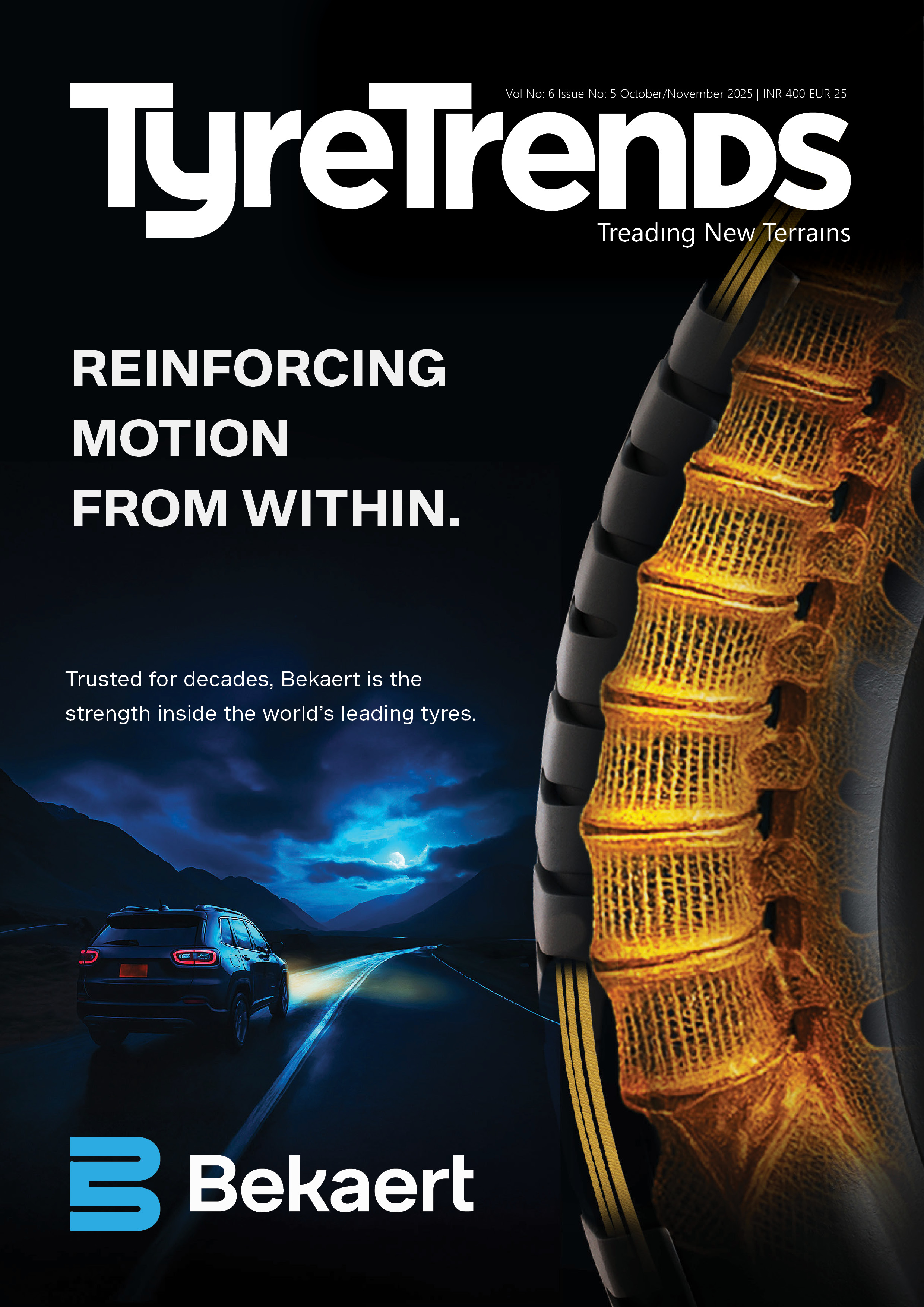

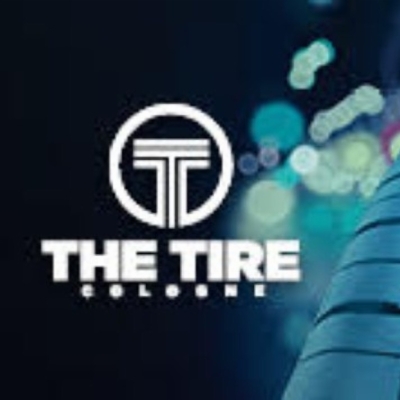


Comments (0)
ADD COMMENT